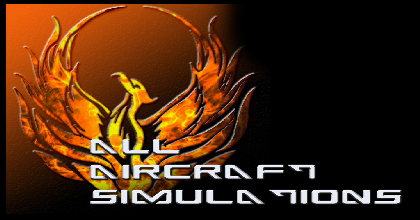10/ 5" HVARs or 2/ 1000lbs bombs both with drop tanks were used, I was wrong.
Good reading
*************************************************************************************
F-80A "Shooting Star"
The AAF definitively endorsed the P-80 on 4 April (2 months ahead of the XP-80A's first flight) with a LC that introduced the first production contract. This contract, as approved in December, called for two lots of P-80s (500 in each). Delivery of the first 500 was to be completed by the end of 1945; the rest, by February 1946. Germany's growing use of jet fighters (and the North American P-51's inability to measure up) underlined the P-80's urgency. In January 1945, the P-80 production got the same high priority as the B-29. This came after concluding that a slowdown of P-38 production would not solve the manpower, space, and part shortages preventing Lockheed from speeding up the P-80 production. Each of the first 500 P-80s would cost $75,913; the later ones, $20,000 less per aircraft. A second production contract in June 1945 raised the P-80 procurement above 3,600-most of them subsequently cancelled. An additional 1,000 P-80s were to be built by North American and labeled P-80Ns to distinguish them from the Lockheed productions. They too were cancelled.
Despite major problems, the AAF received its first P-80A on schedule. The P-80 actually attained quantity production in March (only 21 months from its design), even though precision tools were lacking and the engines were either in short supply or unacceptable.
Accelerated service tests showed that with proper maintenance the P-80A was safe for flight. Many mechanical "bugs" were found, however. An engineering inspection of the 126th P-80A in mid-November (delayed for months because the first planes were practically handmade and hardly typical of later ones) also disclosed a number of deficiencies.
The close of WW II brought a sharp curtailment of the P-80 procurement. The second production contract (June 1945) was completely cancelled on 5 September; the first went through several changes before settling for a total of 917 airplanes, against the 1,000 originally contracted for. Moreover, the P-80's cost climbed some $19,000 per unit, due to reduced procurement, readjusted delivery schedules, and more particularly, required configuration changes. Nevertheless, postwar procurement through fiscal year 1950 raised the entire program to 1,731 P-80s (by then redesignated F-80s) of one model or another. This Air Force Logistics Command (AFLC) figure included all experimental and prototype planes, some 60 P-80s bought for the Air National Guard (ANG), and 128 F-80Cs converted to TF-80Cs (also referred to as T-33s). Lockheed reported F-80 production to be below 1,700. Headquarters AAF/USAF showed 1,562 F-80s bought for the active forces. All three sets of figures were correct, being based on different accounting methods.
Months after many of the P-80s had been accepted, the aircraft were assigned to the 412th Fighter Group. After testing the aircraft, this unit had reported in mid-1945 that the P-80 "was the only fighter airplane with sufficient speed to escort proposed jetpropelled bombers." The 412th also thought the P-80 well-suited for other tactical roles--counter air and ground support. In the spring of 1946 the AAF had 301 P-80s, hardly any of them overseas. The main reason was the same shortage of parts and engines that had kept the P-80 out of WW II. All P-8OAs using J33-9 engines had been grounded in 1945, while a General Motors strike the following year further complicated the engine situation. Furthermore, the P-80 had the highest accident rate in the AAF (More than twice that of any other fighter, excluding the P-59 which was seldom flown.)-36 crashes alone between March and September 1946. Here, low pilot experience played a part.
Beginning with the 346th production, Lockheed put the Allison J33-17 engine in the P-80A. The GE J33-11 and Allison J33-9 engines, used interchangeably by earlier P-80As, would be reconfigured along the lines of the new J33-17. There was no money for Allison to do the work. It would be handled over several years during regular depot engine overhauls.
The AAF paid Lockheed $8.5 million to give the P-8OAs some features of the next model (P-80B). This took roughly 1 year. By March 1948, all P-80As in service had received under-wing rocket launchers, and all but a few got an engine water-alcohol injection system to ease takeoff. To cure canopy problems at high speed, Lockheed installed newly-developed canopy remover kits on many of the P-80As as part of the $8.5 million modernization deal. Oversea units did their own canopy work. The same fund shortages that kept Allison from improving the engines of the early P80As slowed other postproduction modifications. Faulty aileron boost pumps (the cause of several accidents) and hydraulic pressure losses still existed. These, like upgrading the original engines, would eventually be corrected during regular depot overhauls.
Production terminated with delivery of 12 last aircraft in December 1946. 525 p-80s were accepted; AAF accepted 33 P-80As in FY 45, 311 in FY 46, and 181 in FY 47. Cost per aircraft was approximately $95,000, Average cost of the various P-80s ordered under the first production contract of December 1944. If included, research and development costs boosted the aircraft's average price to over $110,000.

![[Image: 7925L.jpg]](http://1000aircraftphotos.com/Contributions/GrattonAubry/7925L.jpg)

![[Image: USAF_Korea_3.jpg]](http://i713.photobucket.com/albums/ww133/spyros-elephant/USAF_Korea_3.jpg)